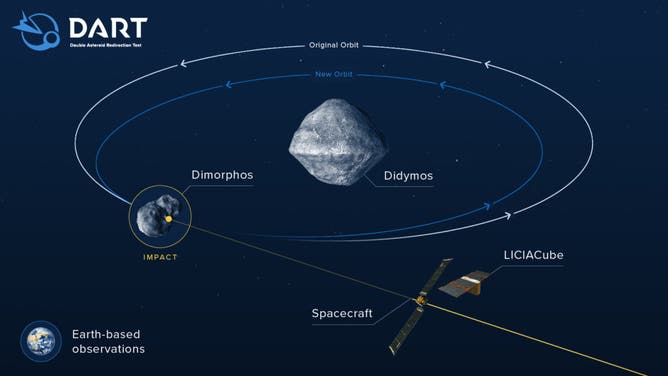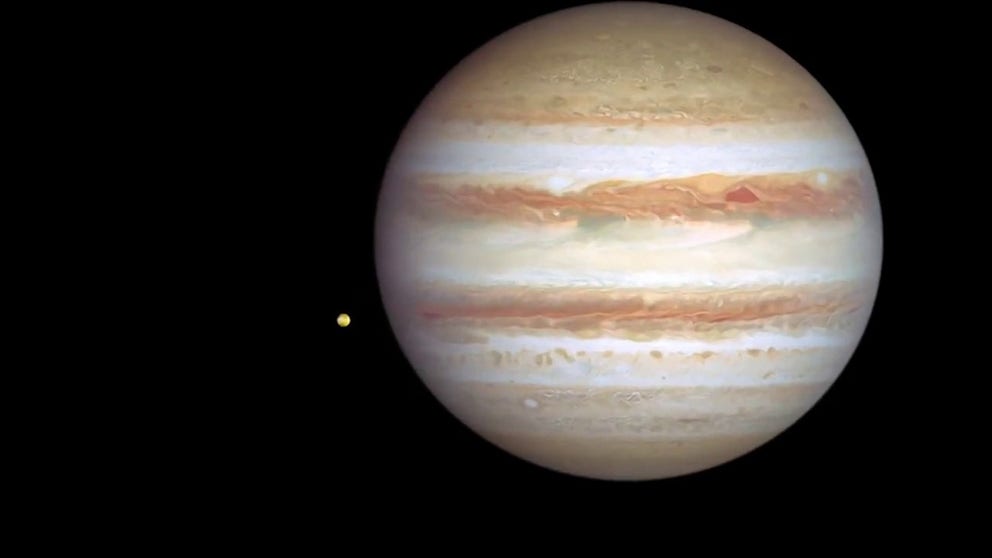Did an asteroid just nearly take out Earth? Nope.
The European Space Agency’s (ESA) Jupiter Icy Moons Explorer (JUICE) is a space mission designed to investigate the gaseous planet and its many moons. The spacecraft launched on April 14, 2023, and is expected to arrive to Jupiter around July 2031.
Hubble Space Telescope tracks Jupiter's changing storms
The giant planet Jupiter, in all its banded glory, takes the spotlight in these new images from NASA's Hubble Space Telescope that capture both sides of the planet. (Video credit: NASA's Goddard Space Flight Center, Paul Morris/Aaron E. Lepsch | Music credit: "From Seedling to Something" by Matt Norman)
An automated warning system designed to alert space experts of an impending disaster mysteriously started going off in July for an object approaching Earth, but officials with several agencies believe there is no need for concern.
The object was estimated to be at least 150 feet wide, but its trajectory eventually made a turn safely around the planet and the Moon.
Upon further examination, the European Space Agency said the object was actually its Jupiter Icy Moons Explorer spacecraft and not some foreign material.
The alarm appears to have gone off because JUICE appeared unusually large to the automated detection system.
"Astronomers determine the size of a near-Earth object such as an asteroid or a comet using its brightness. These objects are typically made of fairly dark, rocky material, and so they need to be quite large to reflect lots of sunlight. Due to the much higher reflectivity of Juice’s large solar arrays, its brightness was similar to that of a much larger asteroid," the ESA said.

Europe's Jupiter Icy Moons Explorer
(European Space Agency / FOX Weather)
SEE THE OBJECTS HUMANS LEFT BEHIND ON THE MOON
If the event had been a true emergency, it is unclear whether agencies such as ESA or NASA would have been in a position to attempt to redirect the asteroid.
NASA has been working on a planetary defense strategy designed to intentionally alter an asteroid’s orbit to avoid a collision with Earth.
The first Double Asteroid Redirection Test (DART) mission was launched in November 2021 and successfully collided with a 525-foot-long asteroid in 2022.
The collision was deemed a success, as it significantly altered the orbit of the asteroid known as Dimorphos.
Dimorphos was not on a collision course with Earth but was merely a test target of the DART mission.

DART and LICIACube shown on a graphic with the binary asteroid system Didymos and Dimorphos. (Image: NASA/ JHUAPL)
NASA ASTEROID-SMASHING MISSION CONTINUES TO PROVE BATTERING-RAM OPTION WORKS TO DEFEND EARTH
Space experts contend that asteroids large enough to cause a global disaster are extremely rare and would need to be at least half a mile wide.
According to the ESA, there are no known asteroids of any size predicted to collide with Earth for at least the next century.
"Our solar system is very large compared to the size of Earth, which means that the chance of Earth being hit by another solar system object, such as an asteroid, is very small. Occasionally, it happens, but not very often," NASA previously stated.
The ESA’s JUICE spacecraft is expected to make several more flybys of Earth through 2029 before reaching Jupiter in 2031.
The mission is designed to investigate the gas giant and its many moons while searching for potential life-supporting conditions.

Europe's Jupiter Icy Moons Explorer mission
(European Space Agency / FOX Weather)
